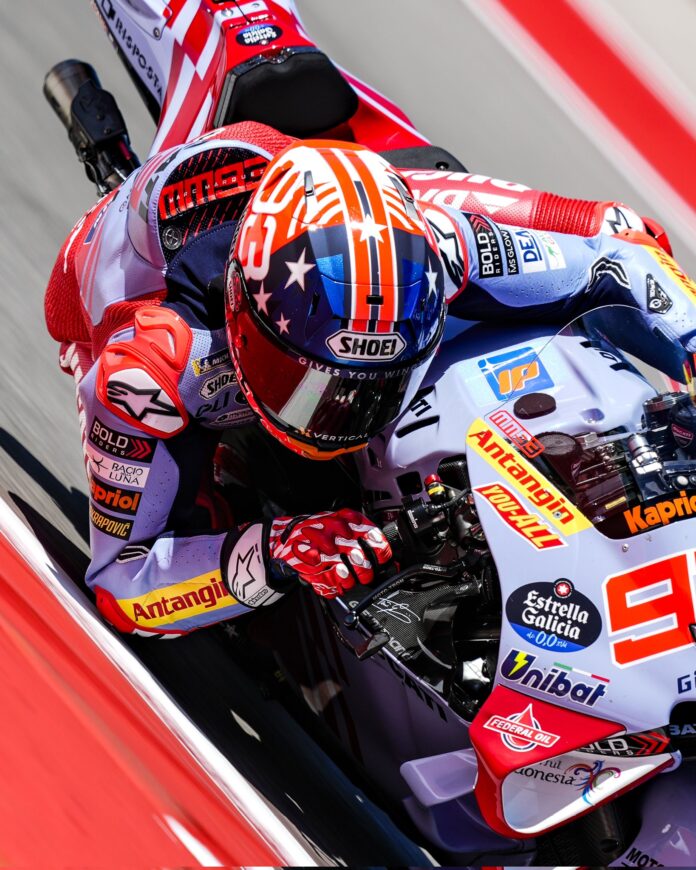From securing yesterday’s pole position during the Tissot Sprint, Ducati rider Marc Marquez experienced an entirely different animal during Sunday’s MotoGP race at COTA, from start to finish.
Marquez, who took P2 during yesterday’s Sprint, unfortunately faced an unexpected hurdle that saw him crash out from the lead during Sunday’s 2024 Red Bull MotoGP of the Americas, unveiling a series of complications for the Ducati rider that continued to take form throughout his race day.
Marquez, with an impressive track record of six wins at COTA, had just seized the lead from Pedro Acosta when he encountered a critical issue. Approaching Turn 11, a notorious hard-braking point on the track, Marquez lost control. Initially, it appeared to be a simple error of entering the turn too quickly. However, the true nature of the mishap was more complex. Marquez later explained that a non-responsive front brake was the real antagonist behind his fall.
Throughout the race, the front brake irregularly failed to engage, putting Marquez in precarious positions repeatedly. “The speed was there, the feeling was there, but I had unexpected problems with the front brake during all the race that gave me a lot of difficulties to ride,” Marquez disclosed. His strategy to lead the race early—to possibly affect a change in the brake’s temperature and responsiveness—ultimately did not pay off when he needed it most.
Despite these challenges, Marquez managed to stay within the top group, noting that the overall pace wasn’t blistering. Yet, the inconsistent braking forced him to adapt his riding style significantly, requiring him to apply the brake multiple times in succession, particularly at the end of the back straight.
“The feeling was changing at every brake point, every corner,” he said, which continuously compounded his worries until the inevitable occurred. Marquez’s troubles highlight broader issues within his team and the bike’s setup.
Transitioning to Gresini Racing and piloting a 2023-spec Ducati, he is part of what he describes as a “new project.” This term not only underscores his transition into the team but also hints at teething problems with the bike, which also seemed evident in the broader Ducati camp. Just a day earlier, Ducati faced reliability questions when Fabio Di Giannantonio of VR46 saw his engine fail spectacularly.
Despite the setback, Marquez maintained a constructive outlook, confident in his team’s ability to address these issues promptly. “Today we had a problem, we need to create the answer,” he remarked, signaling a forward-looking approach to overcoming the mechanical gremlins.
The race’s outcome was further influenced by tire strategy, which Marquez highlighted during the press conference as a pivotal decision that would land him somewhere on the podium. Marquez chose a soft rear tire, aligning with his Ducati peers, whereas the race was eventually won by riders on medium rear tires, including Aprilia rider and Sprint winner Maverick Vinales and Tech3 Gas Gas rider Pedro Acosta.
Reflecting on this, Marquez acknowledged his conservative approach, aiming for a podium finish rather than outright victory. For what turned out to be a pretty drama unfolding race at COTA, there is still very much a thin line between success and setback in MotoGP, where mechanical reliability can be just as crucial as rider skill. And that is what makes for interesting chapters in MotoGP history.









